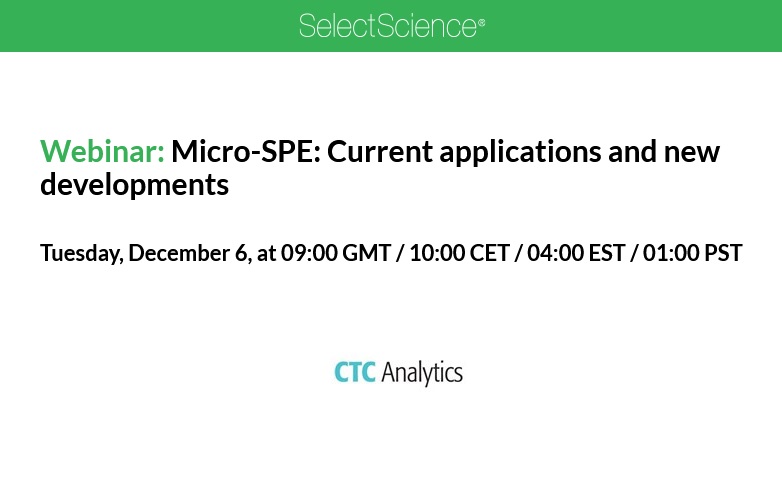Micro-SPE: Current applications and new developments

SelectScience: Micro-SPE: Current applications and new developments
Micro-solid-phase extraction (µSPE) has gained much attention in the field of pesticide analysis. Publications cover the application for extraction of homogeneous samples and the clean-up of the raw extracts from QuEChERS with acetonitrile or from the Swedish ethyl acetate method (SweEt). Today, µSPE is the basis for fully automated analysis for a wide range of matrices. Critical matrices, like spices or fatty animal samples, are processed using one type of µSPE cartridge only, facilitating the choice of sorbent material and lab logistics significantly.
New developments for µSPE applications have recently been made available to routine laboratories. The new cartridge format allows for a wider range of automated applications. A highly convenient programming tool allows customization of the automated workflows to meet individual needs, such as the dilution of standards for calibrations, or the adjustments of raw extract volumes and clean-up speeds. Online GC-MS analysis, as well as the direct elution into LC-MS injection valves, are solutions for increased reliability and productivity.
Key learning objectives
- Understand the benefits of using µSPE for pesticide analysis
- Learn how the automated extraction and extract clean-up works
- Discover how you can use µSPE for QuEChERS and SweEt pesticide methods
- Determine what kind of matrices can be used for pesticides analysis with µSPE
- Master how µSPE connects online to GC-MS and LC-MS
Who should attend?
- Lab mangers and technical staff from pesticide laboratories
- Staff from food and environmental laboratories
- Analysts from industry, governmental, private, and university laboratories
- Members of the regulating authorities in EFSA, FDAs, EPAs etc
Presenter: Hans-Joachim Huebschmann (Consultant, VP Sample Preparation, CTC Analytics)
Hans-Joachim Huebschmann graduated as a Certified Food Chemist from the Technical University in Berlin, Germany, working on the residue analysis of anabolic agents and pesticides in foods.
Huebschmann started his career in diagnostics, medical analytical instruments, and application development, working for a number of German companies in chromatography, mass spectrometry and biotechnology. He held several international positions covering inorganic and isotope ratio mass spectrometry, high-resolution GC-MS and GC-MS/MS, specializing in food safety, forensics, and dioxin analysis. He joined CTC Analytics AG in Switzerland to work on the development of automated sample preparation workflows. In his current international capacity, he is located in Europe and Osaka, Japan.
Huebschmann is the author of several publications including the ‘Handbook of GC-MS’ and ‘Automated Sample Preparation: Methods for GC-MS and LC-MS’.
Presenter: Georgina Wynne Hughes (Editorial Team)
Georgina studied at Birmingham University where she gained a BSc in Biomedical Science, and an MSc by Research in Cancer and Genomic Sciences, which focused on defective autophagy in rare neurodegenerative diseases. As a member of the Editorial team, she now plays an integral role in shaping the content on SelectScience.